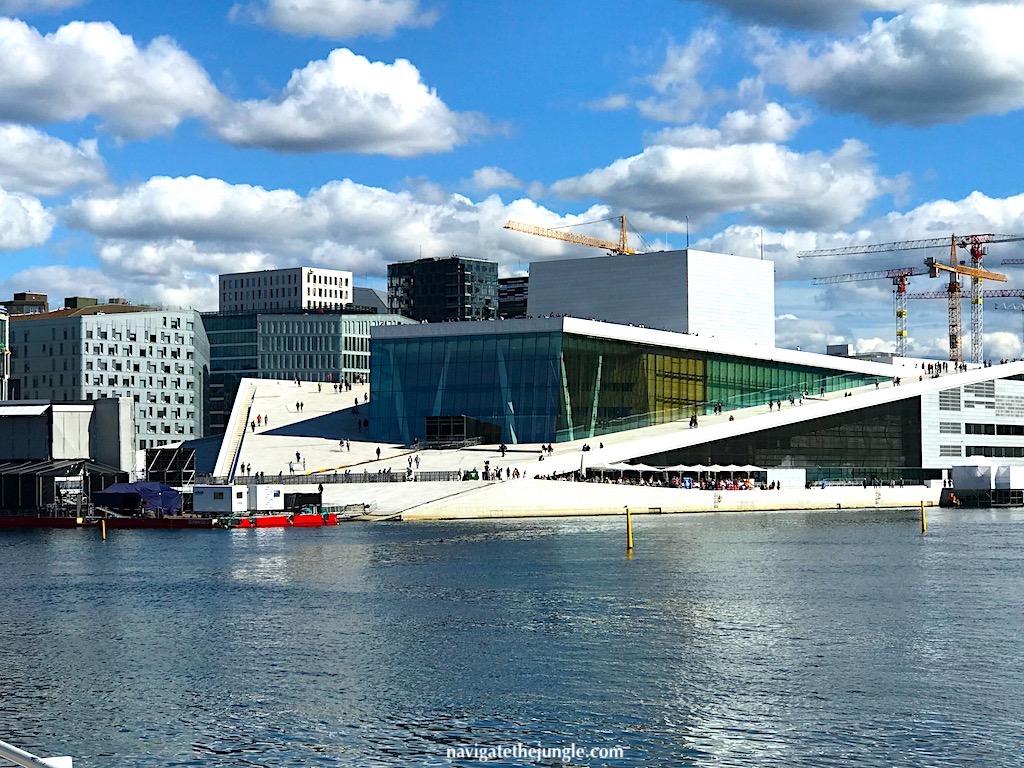A map of our walking tour of historic Oslo
Tucked away at the head of the Oslo fjord, Oslo is one of Scandinavia’s oldest cities with a recorded history of around 1000years. Following the Napoleonic wars, Denmark ceded Norway to the Swedish King Karl Johan in 1814. The main pedestrianised street leading from the Cathedral to the Palace bears his name.
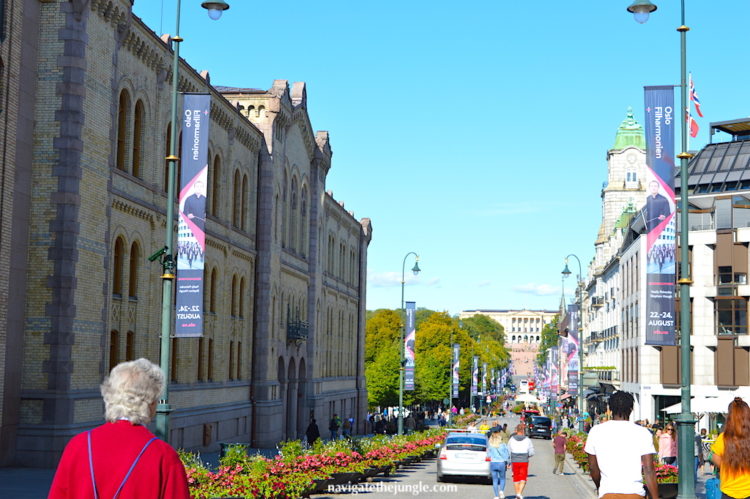
Known as Christiana since 1814, in 1850 it overtook Bergen’s population and became Norway’s capital. Despite having a name change in 1878 to Kristiana, it was changed to Oslo in 1925. Incidentally Oslo was the medieval name for the city.
Oslo is not a particularly large city. But it is the capital city for electric vehicles, that dominate its streets. There were plenty of charging points, many of them free to the user for a restricted time. This is a day’s walking tour that we undertook that took in the main sights. We did however not have time to visit Bygdoy and the extensive Viking museums which would have required a 2ndday. We began our walk at Oslo Station.
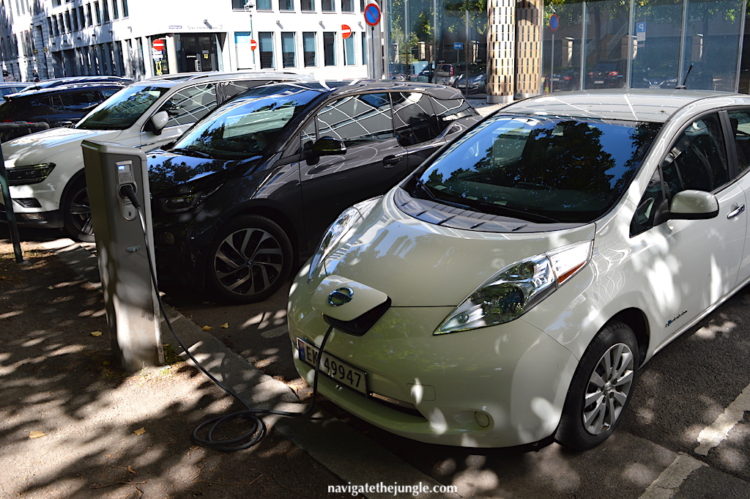
1. Oslo Central Station
We began our stroll around this bustling metropolis from the Oslo train station in the middle of town. It is easy to get lost in the extensive underground walkways emanating from the station. So, head to the front of the station. From here it is a short walk to the Cathedral.
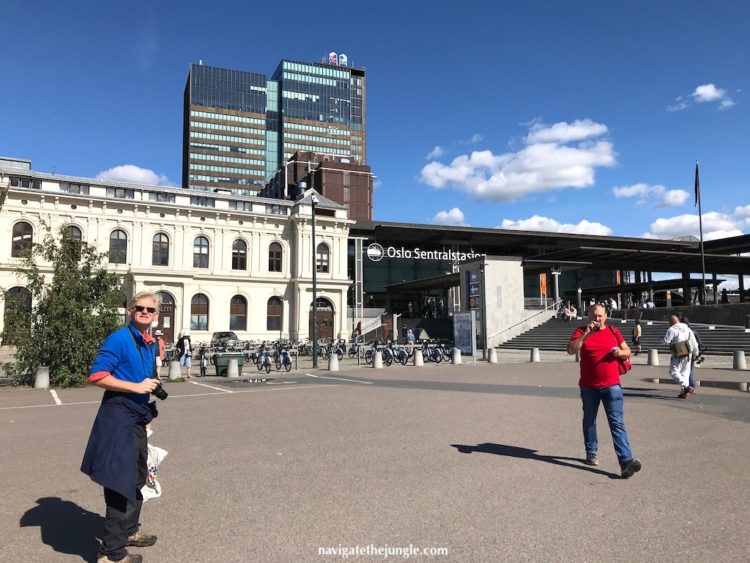
2. Oslo Cathedral
Originally the parish church for the Royal family and central Oslo, it was consecrated as a church in the Lutheran tradition around 1697. This unremarkable building from the outside is transformed by the ceiling artwork inside. Although a Lutheran church, the artwork inside is more in the Catholic tradition. Much of the artwork depicts biblical stories. However, in terms of other such sites throughout Europe, this Cathedral is definitely modest.
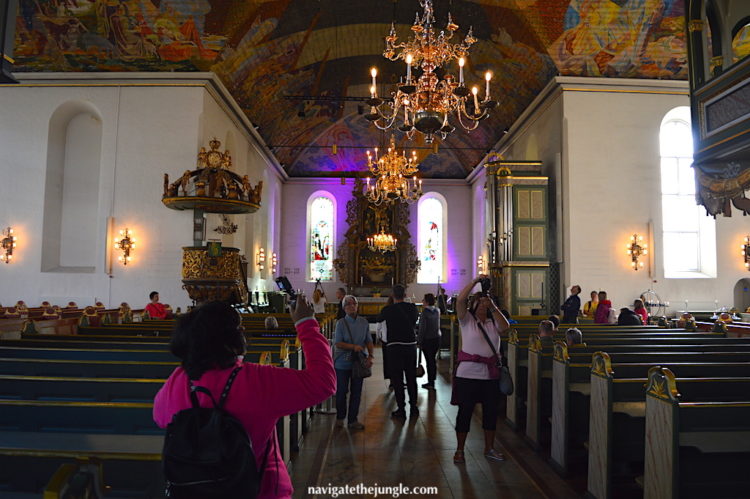
3. Norwegian Parliament
Also called the Storting it represents the sovereignty of the Norwegian people. The Parliament was constituted at Eidsvoll in 1814 and the convention that tool place here was just the beginning. The Eidsvoll Conventions was dissolved and Norway now has a Constituion and a parliament. This Constitution was founded, in the main, on the same ideals expressed in the American Declaration of Independence (1776) and Constitution (1787), and the constitutions of the French Republic, people’s sovereignty, separation of powers and civil rights.
Building of the Parliament was finished in 1866 on Karl Johans Gate nearly 50 years after the constitution was adopted. The buildings were designed by Swedish Emil Victor Langlet and his H-shaped floor plan. The foundation stone was laid on 10 October 1861. It is possible to get a tour of the Parliament buildings. Read more about the architecture of the buildings here.
4. National Theatre
This can be found just off Karl Johans gate between the Storting and the Palace. This was built in the 19thCentury and comes replete with statues of some of Norway’s icons – Henrik Ibsen, Bjornson and Ludvig Holberg. Closeby is one of only two underground mainland stations, Nationaltheatret.
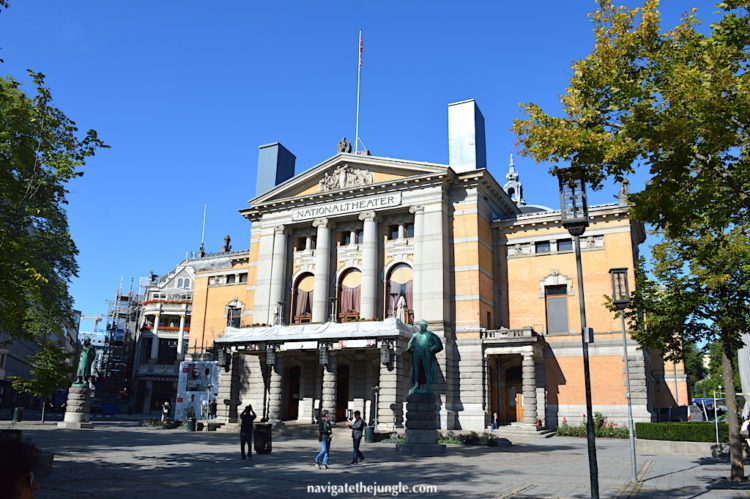
5. Royal Palace or Stortinget
The Swedish King Karl Johans began building the Royal Palace in 1825. He never managed to reside in the building, dying in 1844. It was completed by King Oscar I, his son by 1848 who was the 1stresident of the Palace. This dynasty known as the Bernadottes abdicated the Norwegian throne in 1905 in favour of Prince Karl of Denmark. He took the name Haakon VII as King of a completely independent Norway.
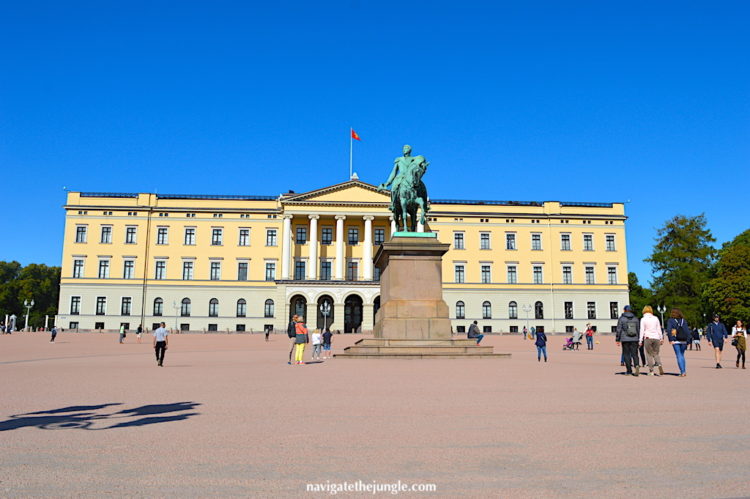
6. Palace Gardens
Ever since the Palace was built, the extensive grounds surrounding it together with ponds, birdlife and parklands has been open to the public. On a hot August day in Oslo, the park provided some welcome shade.
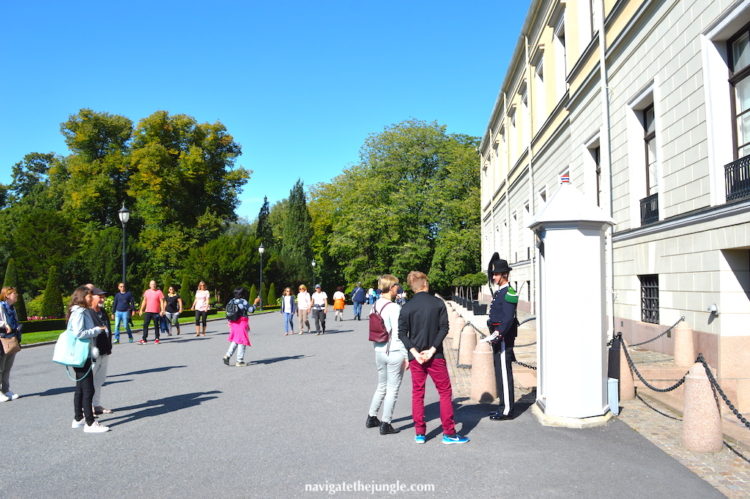
7. Lokkeveien
Leave the Palace gardens on Parkveien, the road that borders the Palace gardens at the rear. Walk past the museum housing the Royal Collection depicting its cultural heritage. Take a left turn onto Lokkeveien which will take you straight down to the harbour.
8. Nobel Peace Centre
This building on the waterfront of Oslo Harbour acts almost as a shrine to the ideals of the UN and the 7-8 goals that should define our approach to humanity. One of these ideals, ‘education for all’ is supported by Malala Yousafzai. She is the youngest joint winner of the Nobel peace prize in 2014. There is a café, shop showcasing ethical and fairly traded products from around the world and tours. This is a great place to show one’s support of this ethos.
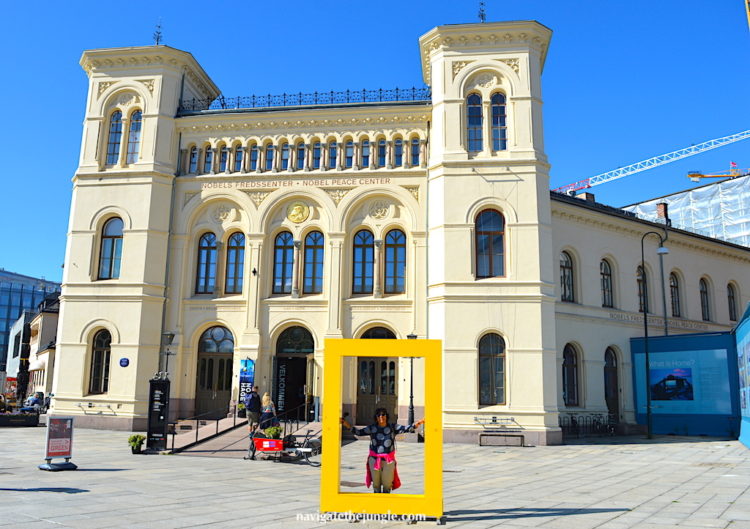
9. City hall (Radhuset)
The Radhuset can be found near Oslo harbour between the Nobel Peace Centre and the Akershus Fortress. This building is filled with colourful murals depicting the day to day lives of local people. It is also the site of the annual Nobel Peace Prize. Indeed, there is little that represents any religion, but focuses on the importance of people.
10. Akershus Fortress
This medieval fortress was constructed by Haakon V between 1299-1319. Following several destructions by fire, Christian IV rebuilt the fortress in 1624 and called it Christiana. This became the capital in 1814 when Denmark was destroyed.
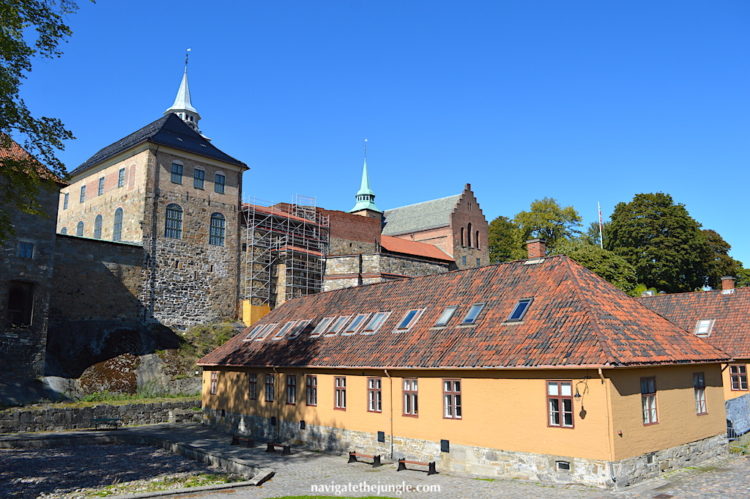
The Resistance Museum is located here and documents events during the 2ndWW between 1940-45. The Fortress bore witness to a number of atrocities during this period including executions and is a fitting place for the museum.
11. Oslo Opera House
Finally, we arrived at the Opera House, located in Bjorvika, in the heart of Oslo. The magnitude of this contemporary architecture was in direct competition with that of the Sydney Opera House. Built in 2000, it is the home for the Norwegian Opera and Ballet. The design concept is that of a monumental ‘wave wall’, depicting the boundary between land and sea. This is the dividing line where people and art come together. Other concepts such as that of the ‘factory’ , that improves the buildings functionality, and the ‘carpet’, depicted by the horizontal and sloping surfaces are also key to the design. The thinking behind the concepts and representations of the building can be read in more detail here.
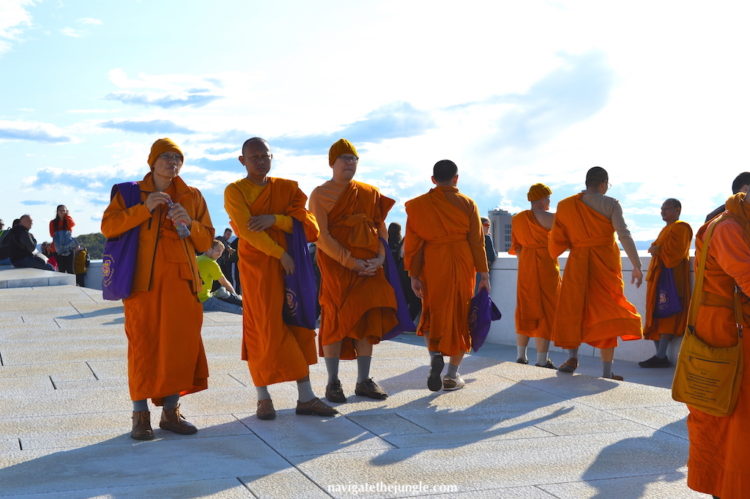
In summary, this tour takes in all the main points of interest in Oslo.
Nangle angle
We needed an extra day to visit Bygdoy peninsula and the Viking museum with its original Viking ship located there.
Nangle facts & tips
We stayed centrally in the Thon hotels certified for its sustainable and environmental practices by the Eco Lighthouse Scheme.

